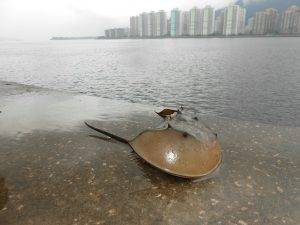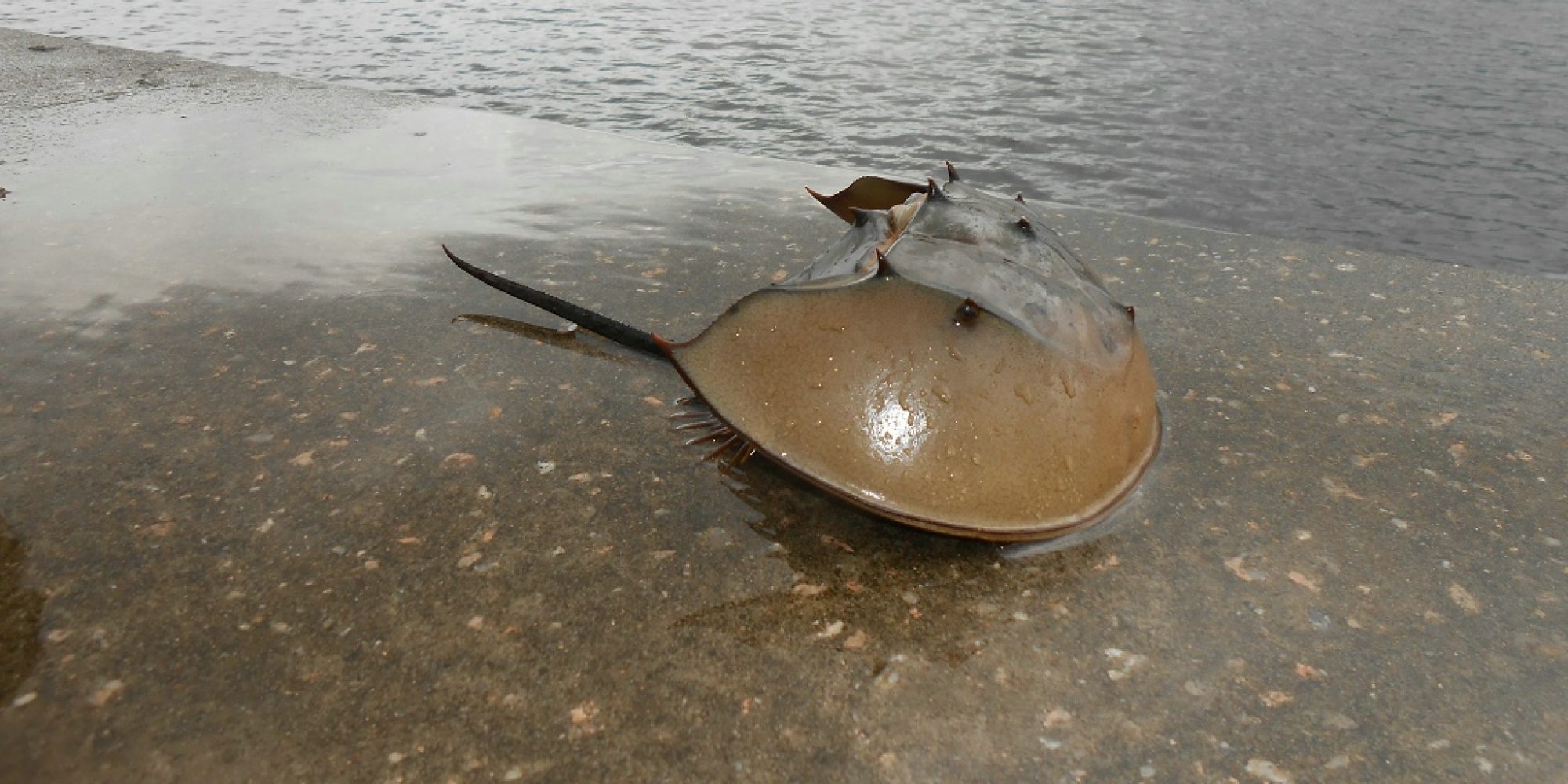Encounter a horseshoe crab? Please tell us more in the SIGHTING REPORT and earn a unique souvenir now! (The promotional period will end on 31 August 2020. Souvenirs are available on a first-come, first-served basis.)
Horseshoe Crabs in Hong Kong
Horseshoe crabs (Chinese: 鱟) are considered as living fossils, as they appeared on Earth even earlier than dinosaurs. To date, there remains only 4 species of horseshoe crabs in the world, with Limulus polyphemus in the America, and the other three living in the Asia namely Carcinoscorpius rotundicauda (CR), Tachypleus tridentatus (TT), and Tachypleus gigas (Sekiguchi and Shuster, 2009; Shih et al,2009; Zaldivar-Rae et al, 2009). Hong Kong is fortunate to be the home of two of the horseshoe crab species CR and TT (Agriculture, Fisheries and Conservation Department, The Government of the Hong Kong Special Administrative Region, 2013).

According to the IUCN Red List of Threatened Species, the Chinese horseshoe crab TT was listed as endangered in 2019 while there is insufficient data to determine the status for the mangrove horseshoe crab CR. Via sequencing the genomes of the two species of horseshoe crabs by our team earlier, it was found that these animals are one of the very few invertebrates that have undergone whole genome duplications at the ancestor (Kenny et al, 2016).
Reference
Beekey, M. A., & Mattei, J. H. (2015). The Mismanagement of Limulus polyphemus in Long Island Sound, U.S.A.: What Are the Characteristics of a Population in Decline? Changing Global Perspectives on Horseshoe Crab Biology, Conservation and Management, 433–461. doi: 10.1007/978-3-319-19542-1_25
Faurby, S., King, T. L., Obst, M., Hallerman, E. M., Pertoldi, C., & Funch, P. (2010). Population dynamics of American horseshoe crabs-historic climatic events and recent anthropogenic pressures. Molecular Ecology, 19(15), 3088–3100. doi: 10.1111/j.1365-294x.2010.04732.x
Kenny, N. J., Chan, K. W., Nong, W., Qu, Z., Maeso, I., Yip, H. Y., … & Hui, J. H. (2016). Ancestral whole-genome duplication in the marine chelicerate horseshoe crabs. Heredity, 116(2), 190.
Morton, B., & Lee, C. N. (2010). Spatial and temporal distributions of juvenile horseshoe crabs (Arthropoda: Chelicerata) approaching extirpation along the northwestern shoreline of the New Territories of Hong Kong SAR, China. Journal of Natural History, 45(3-4), 227–251. doi: 10.1080/00222933.2010.522263
Sekiguchi, K., & Shuster, C. N. (2009). Limits on the Global Distribution of Horseshoe Crabs (Limulacea): Lessons Learned from Two Lifetimes of Observations: Asia and America. Biology and Conservation of Horseshoe Crabs, 5–24. doi: 10.1007/978-0-387-89959-6_1
Shin P.K., Li H., Cheung S.G. (2009) Horseshoe Crabs in Hong Kong: Current Population Status and Human Exploitation. In: Tanacredi J., Botton M., Smith D. (eds) Biology and Conservation of Horseshoe Crabs. Springer, Boston, MA
Widener, J. W., & Barlow, R. B. (1999). Decline of a Horseshoe Crab Population on Cape Cod. The Biological Bulletin, 197(2), 300–302. doi: 10.2307/1542664
Zaldívar-Rae, J., Sapién-Silva, R. E., Rosales-Raya, M., & Brockmann, H. J. (2009). American Horseshoe Crabs, Limulus polyphemus, in Mexico: Open Possibilities. Biology and Conservation of Horseshoe Crabs, 97–113. doi: 10.1007/978-0-387-89959-6_6

